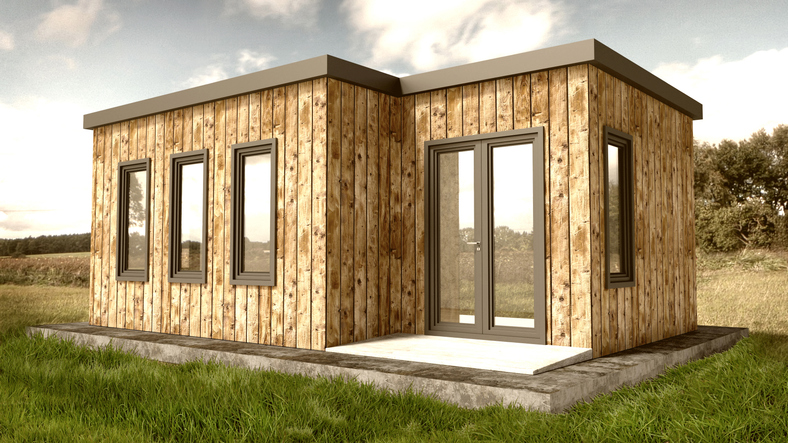In recent years, Accessory Dwelling Units, commonly referred to as ADUs, have gained popularity as a solution for housing shortages and an innovative way to maximize property usage. But what exactly is an ADU, and why are they becoming so popular?
In this article, we’ll dive into the world of ADUs, exploring their benefits, types, and considerations for homeowners. As urban areas face increasing pressure to accommodate growing populations, ADUs offer a practical solution to increase housing density without expanding urban sprawl. This trend is transforming neighborhoods by providing new opportunities for affordable and flexible living arrangements.
What is an ADU?
An Accessory Dwelling Unit (ADU) is a secondary housing unit on a single-family residential lot. Think of it as an additional, smaller home sharing the same lot as a larger, primary residence.
ADUs are complete living spaces with their own kitchens, bathrooms, and entrances, offering privacy and independence. They are versatile living solutions that can serve as rental units, guest houses, or homes for family members, thereby maximizing the utility of a single property.
Why ADUs Are on the Rise
ADUs can take various forms, including detached buildings, garage conversions, or basement apartments. These units are typically more affordable to build and live in than traditional homes, making them an attractive option for many. Moreover, they can enhance property values by providing additional living space and potential rental income.
As cities seek to address housing shortages, ADUs have emerged as a key component of urban planning strategies aimed at increasing housing availability without requiring large-scale developments.
Types of ADUs
ADUs come in several different styles, each with its own set of advantages and challenges. Here’s a closer look at the most common types of ADUs:
Detached ADUs
Detached ADUs are standalone structures separate from the primary residence. Often resembling small cottages or bungalows, these units offer the most privacy for occupants. They can be designed to blend seamlessly with the existing architecture or to stand out as modern, unique living spaces that enhance the aesthetic appeal of the property.
Advantages
-
Complete independence from the main house
-
Flexibility in design and construction
-
Potential for higher rental income due to increased privacy
Detached ADUs provide a unique opportunity to customize the living experience, allowing homeowners to incorporate sustainable design elements, such as solar panels or energy-efficient materials. This flexibility can make them an attractive option for those seeking to create a personalized and environmentally-friendly living space.
Challenges
-
Typically more expensive to build than attached options
-
May require additional permits and zoning adjustments
The construction of detached ADUs often demands careful planning to comply with local building codes and zoning laws, which can vary significantly from one location to another. Homeowners must navigate these regulations to ensure their project meets all legal requirements, which can add complexity and cost to the process.
Attached ADUs
Attached ADUs are built as an extension of the existing home. This type can include additions built onto the side or above a garage. They offer an efficient way to expand living space without the need for a completely separate structure, making them a practical choice for many homeowners.
Advantages
-
Generally less expensive to build than detached units
-
Easier to connect to existing utilities
Attached ADUs can seamlessly integrate with the main home, often requiring less infrastructure work and fewer materials, which helps keep costs down. This proximity to the main residence also simplifies the process of connecting utilities such as water and electricity, reducing both time and expense.
Challenges
-
Less privacy for occupants
-
Potential design restrictions due to existing home layout
The proximity to the main residence means occupants may experience less privacy compared to detached units, which could be a consideration for some homeowners. Additionally, the design and layout of the existing home may impose limitations on how and where an attached ADU can be constructed, requiring creative solutions to optimize space usage.
Garage Conversions
Garage conversions involve transforming an existing garage into a livable space. This option is often cost-effective, as it utilizes an existing structure.
Advantages
-
Lower construction costs
-
Efficient use of existing space
Garage conversions capitalize on the existing framework, significantly reducing the amount of new construction required. This efficiency translates into lower costs and faster project timelines, making it an attractive option for budget-conscious homeowners.
Challenges
-
Limited design flexibility
-
Reduced garage or storage space for the primary residence
While garage conversions can be cost-effective, they may offer limited design flexibility due to the constraints of the existing structure. Additionally, converting a garage into living space may reduce the available storage or parking space for the main residence, which could be a drawback for some homeowners.
Basement ADUs
Basement ADUs are built within the basement of the primary residence. They are a popular choice in areas with basements that can be converted into living spaces.
Advantages
-
Cost-effective, as the structure already exists
-
Minimal impact on exterior property appearance
Converting a basement into an ADU often involves less structural work than building a new unit, making it a cost-effective option. Additionally, because the ADU is located within the existing footprint of the home, it preserves the exterior appearance and landscape of the property.
Challenges
-
Limited natural light and ventilation
-
Potential moisture or flooding issues
Basement apartments may face challenges related to limited natural light and ventilation, which can affect the comfort and livability of the space. Homeowners must address potential issues such as moisture and flooding, which can be common in basement areas, to ensure a safe and comfortable living environment.
Benefits of ADUs
ADUs offer several benefits that make them appealing to homeowners and communities alike. Here are some key advantages:
-
Addressing Housing Shortages: ADUs provide additional housing opportunities in areas with limited space for new development.
-
Generating Rental Income: Homeowners can rent out ADUs to generate extra income.
-
Supporting Multigenerational Living: ADUs offer a flexible housing solution for families who want independence but proximity.
-
Sustainability: ADUs are often smaller and more energy-efficient than traditional homes.
Important Considerations Before Building an ADU
Before embarking on an ADU project, there are several important factors to consider:
-
Local Zoning & Regulations: Local building codes and zoning laws must be researched and followed.
-
Costs & Budgeting: While cheaper than building a full home, ADU costs vary widely.
-
Property Value Impact: ADUs can increase value, but should complement the main property.
-
Utility Connections: Planning for water, electricity, and sewage connections is essential.
Community Impact of ADUs
ADUs have the potential to positively impact communities by addressing housing shortages and promoting diverse living arrangements. They offer a way to increase housing density without altering the character of a neighborhood significantly.
Moreover, ADUs can support local economies by providing affordable housing options for workers and increasing property tax revenue. As more people find housing within their communities, they contribute to local businesses and services, fostering economic growth and vitality.
Conclusion
Accessory Dwelling Units offer a versatile and innovative solution to modern housing challenges. Whether you’re looking to generate rental income, provide a home for family members, or increase the value of your property, an ADU might be the perfect fit.
As with any major home improvement project, careful planning and consideration of local regulations are crucial to a successful ADU development. The potential for ADUs to transform properties and communities is significant, offering a pathway to more sustainable and inclusive housing solutions.
By understanding what an ADU is and exploring the various types and benefits, homeowners can make informed decisions about how to best utilize their property. As cities and towns continue to adapt to changing housing needs, ADUs represent a promising path forward for sustainable and flexible living arrangements.
Embracing ADUs can lead to more resilient communities that are better equipped to meet the demands of future generations, ensuring that housing remains accessible and adaptable for all.


Leave a Reply